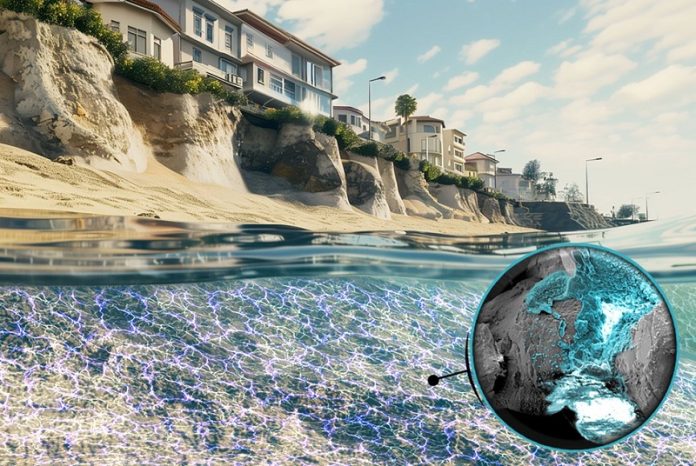
Coastal erosion is a growing threat, especially with climate change and rising sea levels.
Now, new research from Northwestern University has found a surprising and innovative solution: using a mild zap of electricity to strengthen coastlines.
This simple method could protect marine shores from erosion for generations.
The researchers were inspired by how clams, mussels, and other sea creatures build their shells using minerals dissolved in seawater.
These animals use their energy to create a natural cement that holds their shells together.
The scientists wondered if they could do something similar using electricity instead of biological energy.
In their lab experiments, the researchers applied a small electrical current to marine sand soaked in seawater.
The electricity caused the dissolved minerals in the water to form a natural cement, binding the grains of sand together and turning them into a rock-like solid.
This solid sand is much stronger and more stable than the loose, granular sand found on beaches.
The team, led by Alessandro Rotta Loria, found that this technique could offer a sustainable and cost-effective way to protect coastlines from erosion.
By solidifying the sand, they hope to create lasting barriers that can withstand the forces of nature.
The results of their study were published in the journal Communications Earth and the Environment.
Rotta Loria, who is an assistant professor of civil and environmental engineering at Northwestern, explained that erosion is a huge problem for coastal communities. “Over 40% of the world’s population lives in coastal areas,” he said. “Because of climate change and sea-level rise, erosion is an enormous threat to these communities. It causes billions of dollars in damage every year by destroying infrastructure and washing away land.”
Currently, there are two main ways to fight erosion: building physical barriers like sea walls or injecting cement into the ground to strengthen the sand. However, these methods have significant drawbacks. They are expensive, they don’t last very long, and they can have negative environmental impacts. For example, even sea walls can eventually collapse as the sand beneath them erodes.
Rotta Loria’s new approach offers a simpler and more environmentally friendly solution. By applying a mild electric current to seawater, the dissolved minerals in the water are converted into solid calcium carbonate, the same material used by shellfish to build their shells. These minerals act like glue, binding the sand grains together and creating a strong, rock-like structure.
The process works with all types of sand, including those found near volcanoes. In the lab, the researchers found that just a few days of electrical stimulation could produce remarkable results. The treated sand becomes solid and stable, and it should stay that way for decades without needing further interventions.
Another benefit of this technique is that it’s reversible. If a community decides they no longer want the solidified sand, the process can be undone by reversing the electrical current. This causes the minerals to dissolve back into the seawater, returning the sand to its original state.
The cost of this new method is also much lower than traditional approaches. The researchers estimate that it would cost just $3 to $6 per cubic meter of cemented ground, compared to up to $70 for conventional methods.
The potential applications of this technique are vast. It could be used to strengthen the seabed beneath sea walls, stabilize sand dunes, or even repair cracked concrete structures. Rotta Loria’s team is excited about the possibilities and plans to test the technique outside of the lab and on real beaches next.
This new approach could be a game-changer in the fight against coastal erosion, offering a sustainable, cost-effective, and reversible solution to protect our shores for future generations.



